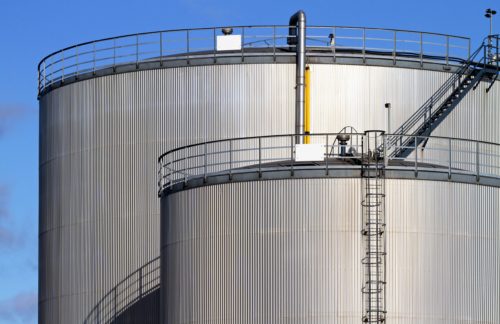Dealing with high volumes of hazardous substances is certainly dangerous. Industrial plants require careful handling of such substances, especially in the form of storage tanks. Whether it’s chemical-based, petroleum-based, or even water-based, it is essential to regularly inspect storage tanks. All in all, storage tanks have to meet plant, state and national regulations. A faulty tank can lead to serious health issues, not just within a particular plant, but also citizens nearby the plant (if a chemical substance is released into the air). Thus, what are the best ways to inspect storage tanks and what should an inspector be looking for?
Drones have emerged as the recent innovative technology to aid industrial inspections. Professionally known as Unmanned Aerial Systems, these hovering contraptions can perform internal and external visual inspections, preventing scaffolding or confined space entry. Additionally, drones can locate defects in 3D and catch them on video to enable human and systematic analysis. They may not be able to enter storage tanks; however, they can serve as a major inspection asset for open, above ground tanks.
 Robots are a great option for storage tank inspection. Robots can go where inspectors or other inspection equipment cannot. Frazier Reliability Solutions uses remote controlled robots that are equipped with full-pan and tilt high definition digital video, with optical zoom for up close visual inspections. Workers can obtain a real time look at the insides of a storage tank. Also, these robots are explosion proof, so if anything goes wrong within a hazardous environment, it is the robot at risk, not the person.
Robots are a great option for storage tank inspection. Robots can go where inspectors or other inspection equipment cannot. Frazier Reliability Solutions uses remote controlled robots that are equipped with full-pan and tilt high definition digital video, with optical zoom for up close visual inspections. Workers can obtain a real time look at the insides of a storage tank. Also, these robots are explosion proof, so if anything goes wrong within a hazardous environment, it is the robot at risk, not the person.
Infrared thermography is another option for storage tank inspection. This type of inspection equipment focuses more so on heating per piece of plant equipment. It can detect capacitor breakdown, unbalanced loads and overheating. Infrared thermography measures tank levels and can detect leaks. Moreover, it can executed by a plant representative and it can be used as a function for drones and robots. Ultimately, infrared thermography is a necessary non-destructive technology that every industrial plant should make use of.
Storage tanks are particular equipment. The above are just a few of the things to look for in internal tank inspections, but there is a lot more to it. The safest and most guarantee strategy is to incorporate a Mechanical Integrity Program for a plant. The OSHA (Occupational Safety and Health Administration) actually requires certain action when it comes to Mechanical Integrity Programs. Actions include specific training and knowledge for a given employee, routine inspections, up-to-code inspection factory equipment. Routinely cleaning and monitoring storage tanks is the surest bet to keeping employees and the environment safe.
Frazier Reliability Solutions’ purpose is to ensure the health and safety of a workplace, and the people who make it up. For this reason, we offer many types of inspection equipment, including the types that were previously mentioned. An upgrade in inspection technology will be well worth it for storage tank inspection and to keep equipment up to code and your staff safe. Don’t put either in danger due to a simple oversight. Contact Frazier Reliability Solutions! Also, please visit our blog for additional related content.